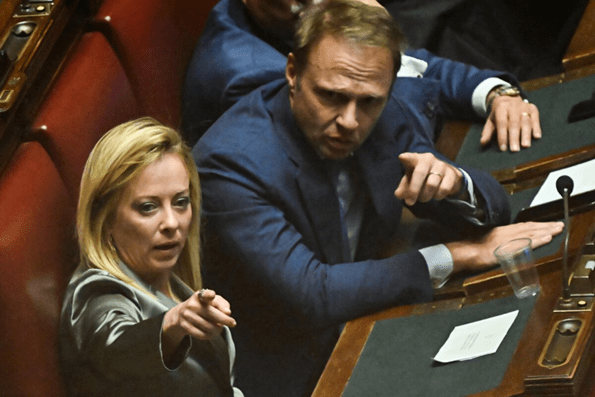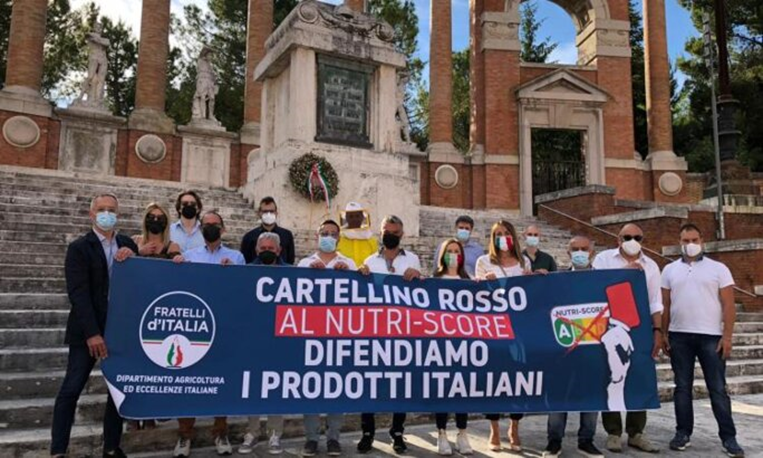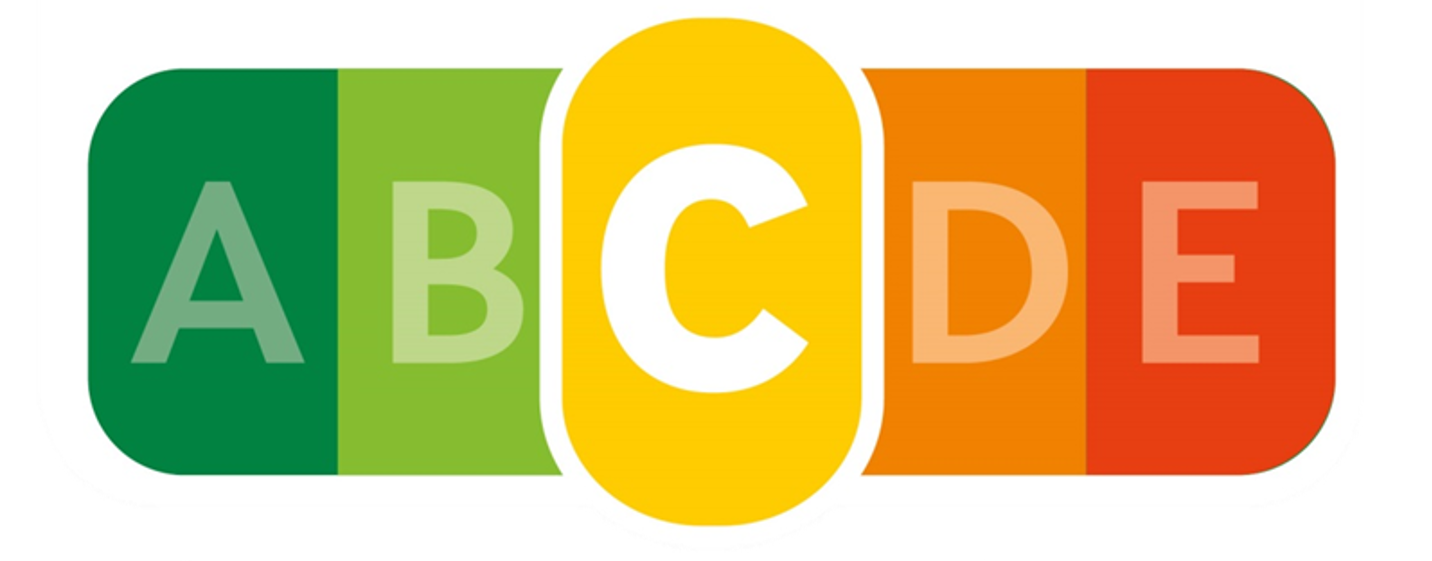A thorough investigation by journalist Karl Laske on Mediapart reveals how the government of Giorgia Meloni and the Italian far right are using gastronationalist arguments to block the process of choosing the Nutri-Score as the mandatory European front-of-pack nutritional label.
The article was published on January 6th, 2024 on Mediapart’s website: https://www.mediapart.fr/en/journal/international/060124/how-italian-food-nationalism-has-blocked-nutri-score-nutrition-labelling-system-europe
Below is reproduced the full text of the article (with the author’s permission).
_______________________________________________
MEDIAPART (December 6th, 2024)
International Investigation
How Italian ‘food nationalism’ has blocked
Nutri-Score nutrition labelling system in Europe
The food nutrition labelling system known as Nutri-Score was first introduced in France in 2017 and later adopted by Belgium, Switzerland, Germany, Spain, Holland and Luxembourg. The aim of the five-coloured label scheme is to help guide consumers towards eating healthier produce. But on the pretext of defending Italian food, Giorgia Meloni’s government and the Italian far right have so far prevented this system from being rolled out across the rest of the European Union.
“Nutri“Nutri-Score is madness and Fratelli d’Italia will work to block this discriminatory labelling system.” Giorgia Meloni promised it during a visit to the European Parliament in 2021. And one year after arriving as head of the Italian government the prime minister seems to have kept her word. For the five-coloured nutritional labelling system, which was first used by France in 2017 on a voluntary basis, and which has been adopted since by six other European countries, was not presented by the European Commission for approval by the European Parliament in 2023 as had been planned.
Back in 2020 the idea formed part of the Commission’s ‘Green Deal’ and its ‘Farm to Fork’ strategy. And this ‘Front-of-pack nutrition labelling’ (FOPNL), which was initially approved by the Parliament in 2021, was supposed to have been set in stone in 2022.
But the Italian prime minister, who insists that the labelling “penalises” traditional Italian products, made it a campaign issue in Italy. Members of her Fratelli d’Italia (FI) or ‘Brothers of Italy’ party took part in flash mobs and street protests brandishing banners proclaiming “Italian produce = quality” and “No to Nutri-Score”. In reality, Italian hams and cheeses, as full of salt and fat as their rival French and Spanish produce, receive the same – unfavourable – score as them, a classification which is less about scaring off consumers and more about encouraging them to moderate their consumption.

Italian PM Giorgia Meloni and her brother-in-law Francesco Lollobrigida, Italy’s agriculture minister, October 14th 2022. © Alberto PIZZOLI / AFP
Alongside the demonstrations in Italy, Giorgia Meloni also conducted a powerful lobbying operation in Brussels and Strasbourg. Indeed, the European Consumer Organisation (BEUC) and the non-governmental organisation Foodwatch recently revealed the minutes of meetings held at the European Commission in 2022 at the request of different lobby groups from the food industry. These highlight the Italian influence operation in relation to the Commission’s farming department, the Directorate-General for Agriculture and Rural Development, and the commissioner for agriculture Janusz Wojciechowski.
A ‘red line’
Wojciechowski, a former member of the European Parliament, is a member of Poland’s ultraconservative Law and Justice party which is affiliated to the European Conservatives and Reformists Party (ECR Party), to which Fratelli d’Italia also belongs. On November 21st 2022 he was visited by Italy’s new minister for agriculture, Francesco Lollobrigida, Meloni’s brother-in-law. This meeting had been prepared in advance by one of the Polish commissioner’s ‘sherpas’, Roberto Berutti, a former member of the permanent Italian delegation in Brussels and who is close to several Fratelli d’Italia leaders from the Piedmont region.

A Tweet from Francesco Lollobrigida, the Italian minister for agriculture. © DR
“For the time being the European Commission has not made a determination,” Professor Serge Hercberg, the French epidemiologist who created the nutrition labelling system, says with regret. “But we have no indication that it remains on its agenda. We have the impression that lobbying has made the Commission give way.” The French scientist says that Italy has behaved like a “steamroller” over the affair. “We see in the reports revealed by BEUC that Italian representatives are very active against Nutri-Score,” says Serge Hercberg. “The Italians have a real political presence, while we don’t feel any movement on the French side to support it.”
A transnational body governing the nutritional logo, made up of health authorities from the seven countries who had adopted it (Belgium, France, Switzerland, Germany, Spain, Holland and Luxembourg) has approved a new version of the algorithm which was scheduled to come into force on January 1st 2024. Its calculations will bring about changes in classification in relation to the salt, sugar and fibre content of products, and this is likely to be “much more penalising” for large industrial food firms, according to the logo’s creator.
Meanwhile Italy has collected several allies in its opposition to the scheme: Romania – the most opposed – the Czech Republic, Greece, Lithuania, Hungary and Cyprus. On June 24th 2021, during talks in Brussels with the prime minsters of Hungary, Slovenia and Poland – Viktor Orbán, Janez Janša and Mateusz Morawiecki at the time – Giorgia Meloni had “drawn the attention” of these leaders to the “Italian battle against Nutriscore, the traffic light nutritional labelling system that heavily penalizes Made in Italy products”, as Fratelli d’Italia put it in a report of the meeting. The head of the far-right Italian far right party also made use of these “bilateral” talks to meet the commissioner for agriculture Janusz Wojciechowski.

Photos from Giorgia Meloni’s visit to Brussels in June 2021, assembled by Fratelli d’Italia. © DR
“In the minutes that we have analysed, we see that Italy has claimed that Nutri-Score is not scientific, which is false, that consumers don’t know how to use it, which is false,” explains Emma Calvert, BEUC’s spokesperson. “What’s unbelievable is that they claimed that Nutri-Score and the bad mark given for spreads was going to penalise cacao producers and increase immigration in Europe!”
Moreover, the sheer number of meetings the Italians obtained with the Directorate-General for Agriculture (DG-Agri as it’s often called) and with the commissioner for agriculture Janusz Wojciechowski surprised BEUC.
On October 4th 2022 the Italian delegation went with the Italian agro-industry employers’ trade body Federalimentaire to meet the DG-Agri; on October 27th they met the commissioner’s office team, which as BEUC notes did not feature in subsequent transparency declarations. And on October 28 a third meeting took place in the presence of the DG-Agri leadership team.
“In Italy the government, the industry and farmers are all opposed to Nutriscore or similar front of pack nutrition labelling (FOPNL),” state the minutes of this meeting. “This is clearly a red line for the Italian government.”
“[Italy’s] assessment is that currently there is more support [editor’s note, within the EU] against Nutriscore than in favour,” note the minutes, which point to five member states supporting Italy’s stance, four supporting the scheme and other member states who are “ambivalent but [who] share Italian concerns”.
“AGRIC is aware of the concerns expressed by Italy and is vigilant on (sic) them,” says the same English-language memo. “No decision has yet been made, SANTE [editor’s note, the Directorate-General for Health and Food Safety] is finalising the impact assessment. In any case, the proposal will have to be supported by Council and Parliament.”
‘Nine fake news’ in one Tweet
No minutes have emerged of the meeting held on November 21st 2022 between the commissioner for agriculture Janusz Wojciechowski and Italy’s minister for agriculture Francesco Lollobrigida. Just a preparatory note has been made public. “We are aware of the Italian concerns on ‘Nutriscore’ and attentive about the possible impact of such scheme on products which cannot be easily reformulated such as Geographical indications, single ingredient products olive oil, cheeses, etc.” write the Polish commissioner’s ‘sherpas’.

A Tweet by Francesco Lollobrigida, after his meeting with commissioner for agriculture Janusz Wojciechowski. Italy’s minister for agriculture said: “Reaffirmed our position on Nutriscore, a misleading tool with respect to the objectives it sets.” © DR
Appointed agriculture minister a month earlier, on the day of his nomination Meloni’s brother-in-law took part in his first meeting with counterparts from seven EU member states in Brussels. During a subsequent press conference he immediately attacked the nutrition logo. Italy had no need of tools which “don’t give enough information” and which were even “dangerous” from the point of view of consumer packaging, he said.
In January 2023 Francesco Lollobrigida, told directors of the Grana Padano Protection Consortium at Desenzano del Garda that he had done nothing less than “obtained the postponement of the Nutri-Score process until 2024”, claiming that it had been “withdrawn from the European agenda”.
“Grana Padano is an excellent product of which we are proud and which we will continue to defend with facts. All the actions we carry out with the Meloni Government are with this aim, inside and outside national borders,” he said.
The far right figure’s gastronomic nationalism is very evident on social media where he extols the virtues of products ‘made in Italy’, and flies the flag on pasta or pizza international days. When Ireland got permission from the European Union to put warning labels on bottles of wine and other alcoholic drinks, Francesco Lollobrigida took up cudgels on behalf of the Italian wine lobby and fired off more Tweets. He offered to help Ireland make their labelling “clearer” and in particular ensure that they contained “correct information”, stating that “wine seriously damages the health of those who don’t drink it”.
Lollobrigida said: “We consider Ireland’s action incorrect because it is one thing to inform and invite moderation, which we believe is right; it is another thing to say that a product, no matter how much you take, is bad for you.” The Italian farming body Coldiretti even referred to “terrorism” when describing the labelling on wine bottles.
On February 28th 2023 the Italian minister resumed his campaign against Nutri-Score in a Tweet which called for “common sense”. He wrote: “Nutri-Score is an erroneous system. It penalises healthy and quality food.” He then showed ultra-processed foods claiming they received an ‘A’ with a green background – chips, pizza, seed oil, cola, – while claiming products from the Mediterranean region were being given bad marks with an ‘E’ set against a red background: wine, olive oil, beef and pasta.

The anti-NutriScore Tweet by Italian agriculture Francesco Lollobrigida. © DR
Back in Paris, Serge Hercberg, the inventor of the nutrition labelling scheme, was astonished at the Italian minister’s message. “In a single Tweet aimed at discrediting Nutri-Score, the minister of agriculture disseminated no fewer than nine items of fake news,” he said.
On Twitter, now known as X, the scientist listed the errors. “Cola-type soda waters are never classified as A, but classified as E (the light versions are classified as B at best); pastas are not classified E but on the contrary A; olive oil has never been classified E but gets a C, the current best score for a vegetal oil; seed oils are not classified as A, they are at best classified C (for rapeseed oil), most often D (peanut, maize, sunflower oils) or E (coconut, palm); pizzas are not classified as A as their Nutri-Score varies from A to E according to their nutritional composition (saturated fat, salt, vegetable, fibre content…) and only a very small minority of pizzas get to be classified A, the majority are classified C, D or E. Unprocessed fresh meat is not classified E but its classification varies from A to C according to its composition (more or less fat)…As for chips, they mostly get a Nutri-Score of A or B because they are potatoes that have undergone a pre-frying process which has a low impact on the quantities of fat materials in the product.”
Finally, wine itself cannot be classified as an E because it is not classified at all; alcoholic drinks with an alcohol content of more than 1.2% are not subject to a nutritional declaration.
In other words, the minister had written complete rubbish.
But Serge Hercberg’s comments went down badly in some Italian social media circles which have been infiltrated by the far right. The epidemiologist was attacked by Gian Marco Centinaio, vice-president of the Italian Senate and a member of Matteo Salvini’s Lega party, who accused the French scientist of “attacking the Italian government”. The expert also received threats and anti-Semitic comments highlighting the fact that he comes from a “family of Jewish Polish emigrés”. Someone called MagisterZatta on Twitter/X told him: “Nutri-Score is shit, you’re going to die soon.” And the French expert was told: “Watch out, your time has come.”
The homeland, land of their forefathers
The tone of the anti Nutri-Score campaign had been set by Matteo Salvini himself in 2019. “From Brussels they want to impose on us what to eat. Nutriscore is crazy bullshit […] Let no one dare to outlaw the products of our sea and our land!” declared the leader of Lega. Giorgia Meloni said: “We at Fratelli d’Italia have always been attentive to the defence of our agriculture (…) We are a party of patriots and the Homeland is the land of our forefathers, not only understood as a bond of cultural belonging but also as love for the land, the magnificent territory that the good God has given us.”

Activists from Fratelli d’Italia demonstrate against Nutri-Score at Macerata, Italy, in June 2021. © DR
Silvia Sardone, a Lega MEP who belongs to the Identity and Democracy group at the European Parliament – to which France’s far-right Rassemblement National also belongs – visited France to try to demonstrate that there was a “plot” against Italian products.
“I went into three supermarkets where Parma ham and Italian mozzarella were considered to be unhealthy products, while industrial produce and some real crap had the green label,” she said, putting a video of her inspection in France online.
“Look, Parma ham, one of our excellent products, with a category D, it’s not considered to be a healthy product,” she says, showing a product labelled by supermarket Auchan that had come out of a fridge. “Now look at something French, this meat with vegetables,” she continued, showing a prepared meal of veal paupiette. “The Nutri-Score magically becomes A with a green label, the product becomes healthy.”
In contrast, the MEP complained, Italian products were given orange or red labels. She showed a pizza made in France which had a “horrible appearance” and which “I would never eat”, yet which had a “green label”. Then she grabbed a “ricotta made in Italy” which is classified ‘C’ on the shelves. These products are not comparable but the point had been made: an ‘A’ for France and a ‘C’ for Italy. The MEP said she had “concerns” that the label was awarded “on the basis of the nationality of the provenance of products” rather than their real quality.
In fact, the episode suggests that gastronomic nationalism can render one blind. The MEP who showed the pastas made in France and classified with an ‘A’ did not look at the Italian pastas – which also had the same ‘A’ classification.
The opposition to Nutri-Score on Italy’s far right has spread to other political parties, to allies of Meloni but also to the leftwing Partito Democratico, and including figures linked to agro-industry, such as the MEP Paolo De Castro, whose Parliamentary declarations of interest inform us that he is remunerated for sitting on the scientific committee of the Consortium du Grano Padano. Italy is meanwhile progressing uncertainly with its own alternative system, NutrInform Battery, a blue logo scheme which gives the percentages of salt, sugar, fat and saturated fat in a product. The Italian farming union has itself informed the EU Commission that NutrInform was “not yet suitable and not easy to use”.
In contrast, a 2022 report by the European Commission’s Joint Research Center (JRC), summarising 173 scientific articles, confirmed the value of Nutri-Score in encouraging people to buy healthier products. “Consumers tend to understand simpler, evaluative, colour-coded labels more easily than more complex, reductive, monochrome labels,” concludes the report. It says that the five-colour logo “has the potential to guide consumers towards healthier diets” and can also “stimulate food product reformulation and innovation”.
The European Consumer Organisation (BEUC) hopes that the Nutri-Score system blocked by the Italians will eventually get the green light in Europe. But the proximity of the European elections this June may well not sideline the voices of those populist and nationalist parties who are today on the attack over the issue.
“For us the best option is to have a single libelling for all of Europe,” says Emma Calvert from BEUC. “But if the Commission doesn’t go through with presenting the law as it had committed itself to doing, then member states should be left free to recommend food labelling in their own countries.”
————————————————————————
- The original French version of this article can be found here.
English version by Michael Streeter
